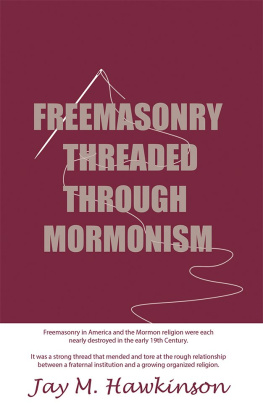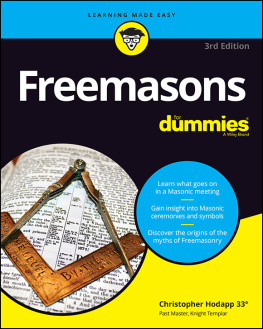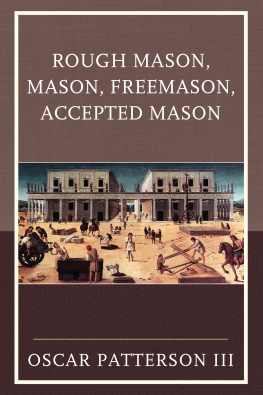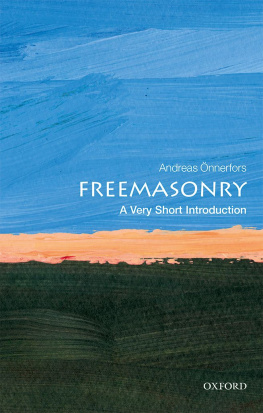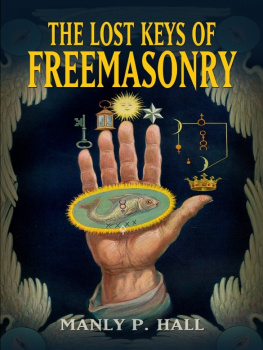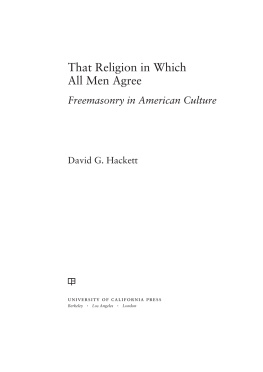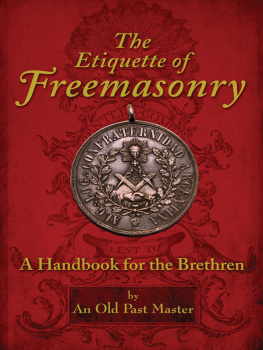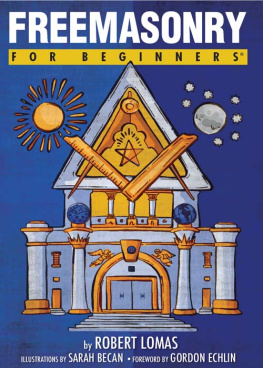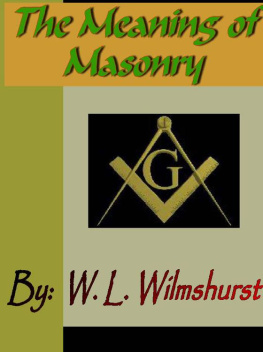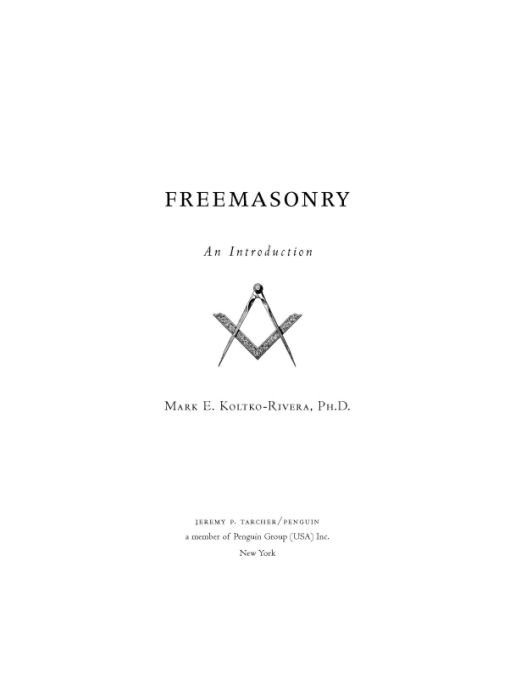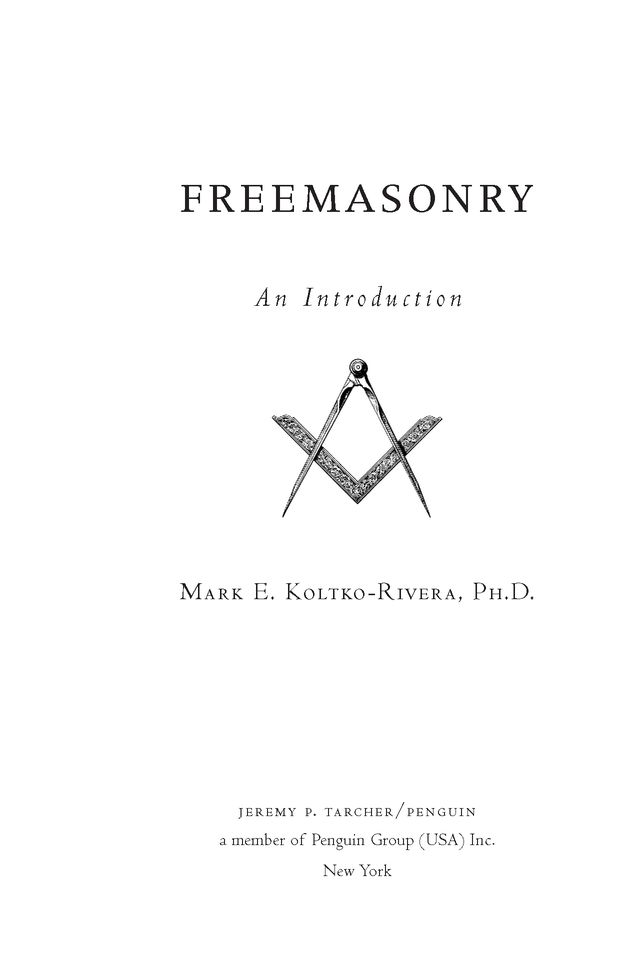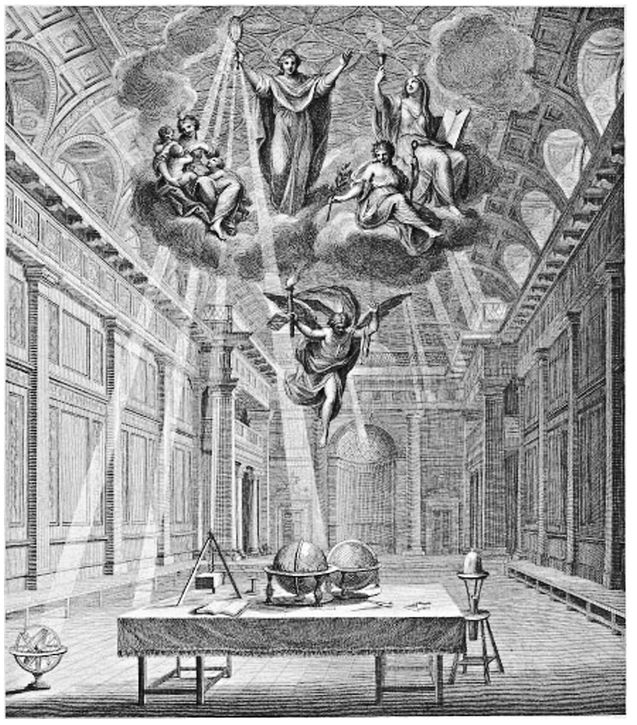Table of Contents
Frontispiece to the 1784 edition of James Andersons Constitutions of the Ancient Fraternity of Free and Accepted Masons, edited by John Noorthouk, and published in London by J. Rouza, by order of the Grand Lodge of Freemasons in that city. The plate was drawn by Giovanni Battista Cipriani and Paul Sandy and engraved by Francesco Barolozzi and James Fittler. The Constitutions, first published in 1723, publicized the legendary history of Freemasonry, which purportedly stretched back for centuries; this history has much symbolic significance.
The frontispiece portrays a symbolic or allegorical scene set in Londons Freemasons Hall; the architectural detail seems to be accurate. In the eighteenth century, it was not uncommon for a books frontispiece to show a tableau of allegorical figures, such as we see here. The uppermost figure, Truth, holds a mirror that reflects rays of light (presumably from heaven) onto items that one would see in a Masonic lodge of the day, such as the globes of the world and the sky, seen on the table. Truth is accompanied by Faith, Hope, and Charity (right to left). The Genius (teaching spirit) of Freemasonry descends into the hall with the lighted torch of knowledge; the Genius of Freemasonry also carries a ribbon with a medal hanging from it, to give to the Grand Master of Freemasons as a token of divine approval.
(See description of the frontispiece on the website of the Grand Lodge of British Columbia and Yukon at http://www.freemasonry.bcy.ca/texts/gmd1999/tb04.html.)
To my Masonic forebears:
F. Leland Watkins, Sr.
(1869-1958)
F. Leland Watkins, Jr.
(1899-1985)
Master Masons
32, Masters of the Royal Secret
Knights Templar
Presidents of the Dakota Business College
Masonic leaders in Fargo, North Dakota
Great-grandfather and Grandfather of
Kathleen Koltko-Rivera
my loving and beloved wife
INTRODUCTION
In recent years, there has been a sharp increase in curiosity about Freemasonry. This has occurred for a variety of reasons, including the mention of Masonry in several best-selling books and popular movies. All of this exposure has led many people to wonder what Freemasonry is and whether there is something in Masonry for them. In my experience, a substantial number of these people newly interested in Freemasonry have a keen interest in the esoteric: they want to know what the rumored mystery of Freemasonry is all about, and what it means to their lives.
This short book is written for the man who is curious about Freemasonry, including the new Mason. (Standard Freemasonry is a male organization, but see Chapter 6.) In writing this book, I have tried to keep in mind the main issues that someone interested in Freemasonry might be thinking about: What is Freemasonry? Why do men become Freemasons, especially these days? What does it really mean to be a Freemason? How does Freemasonry work? What is the point of Masonic symbolism? How did Freemasonry begin? What about the controversies and even the scandalous rumors that one occasionally hears about Freemasonry? What about the depictions of Freemasonry that one sees in the movies or reads in books? How does one become a Freemason? What are reliable sources to consult in learning more about Freemasonry? These are my concerns here.
For the sake of the reader interested in the esoteric side of Freemasonry, I have paid special attention to the meaning of Masonic symbolism and how this is applied to Freemasons lives. In addition, I carefully address the possible relationship between Freemasonry and the traditions of earlier days.
Something about Freemasonry has piqued your interest. Is Freemasonry for you? By the time you finish this book, you will know whether Freemasonry is something about which you wish to learn more. If you find that Freemasonry is not for you at this time, I thank you for your interest, and I bid you the best of good fortune in your journey through life. If you find that Freemasonry is of further interest to you, I am glad for your interest; however, you will need to take further action to satisfy your desire for more information.
In the United States, Freemasons are generally prohibited by Masonic custom from inviting someone to become a Freemason. Therefore, if you find that you are interested in Freemasonry, you will need to take the initiative yourself to seek out a lodge and apply for membership. This book will tell you how to do that.
I am a Freemason. I believe in Masonic values. Freemasonry has contributed to the quality of my life in several ways. Even more important, I feel that Freemasonry has contributed to the good of society in several ways, over the course of centuries. For these reasons, I feel that it is worthwhile to publish accurate information about the Masonic fraternity. This edition features well over 50 percent more material than the earlier edition published by LVX Publishing. The glossary near the end of the book may help make the terminology of Freemasonry less confusing.
I am grateful for the generous guidance and assistance rendered to me by Thomas M. Savini, the director, Roseann M. Huschle, receptionist, and Catherine Walter, curator, at the Chancellor Robert R Livingston Masonic Library of Grand Lodge, the jewel in the crown of New York Freemasonry. I obtained access there to valuable materials I could have found in no other library in the state. I am also grateful for the use of materials held by the Elmer Holmes Bobst Library of New York University. I am particularly grateful for materials generously shared by Arturo de Hoyos.
I thank Kathleen Koltko-Rivera, Arturo de Hoyos, and Viktor Koltko for their comments on an earlier version of this manuscript. I am thankful to many at Tarcher/Penguin for helping to make this book a reality, such as Gabrielle Moss, Jennifer Tait, Jennifer Uram, and Balie Keown. I am particularly grateful to Mitch Horowitz, my editor at Tarcher/Penguin, for his vision, which has brought this work to a larger public, and for his manner, which made this new author very comfortable.
Freemasonry: What It Is
The question What is Freemasonry? has been answered many ways over the last three centuries. It is not easy to answer, because our society has very few examples of similar organizations for comparison. However, this is an important question for several reasons: Freemasonry is important in the lives of millions of people today; during the course of over three centuries, modern Freemasonry has inspired countless people; and Masonry has shaped the ideals of nations, including the United States of America.
Here is a brief definition that packs a lot of meaning into just a few words: Freemasonry is a fraternity that uses ceremonies of initiation to teach symbolic lessons about philosophy, morality, and character. Now let us unpack this definition, phrase by phrase.
Freemason is a fraternity...: Masonry is open to adult men of good character who believe in a Supreme Being. It is built around the ideas of the development of character, personal growth, responsibility, duty, service to God and humanity, and fellowship.


